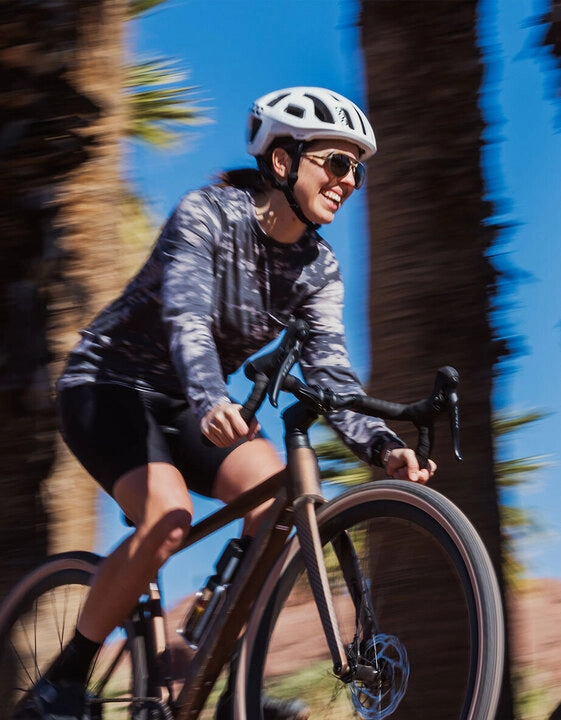Written by: Spencer Powlison
Published on:
Posted in:year-1988
The young BMX racer from Michigan signed with Mongoose in 1986 and the company quickly set about making a race bike to his specifications.
For ‘87, Tomac rode a steel 4130 triple-butted frame. The next generation, shown here in our museum, was built with Tange Prestige double-butted tubes. Though the material choices evolved, the beating heart of the frame, its geometry, stayed true to Tomac’s flat-out racing style. The Tomac Signature bike was “Steeper and tighter than virtually any bike out there,” wrote Keith Mills in a review for Bicycle Guide.
Though the “Johngoose” in TPC’s museum has the team livery, it is not actually a race-ridden bike. It’s a replica, but it shares nearly every design feature of Tomac’s race bikes. With a 72-degree head tube angle, it was radically steep for the late-’80s. It also has a 41” wheelbase, a rangy 22 ½” top tube and a 150mm stem.
“These sharp angles are the clearest indication of rider input,” Tomac told Zapata Espinoza for a review in the September 1987 issue of Mountain Bike Action. “I like a bike with quick handling.”
Unlike a lot of manufacturers in that era, Mongoose listened to Tomac’s feedback, built the bike he wanted, and then actually sold it to consumers. For example, “Johnny T.” was reportedly not happy with the 11 ¼” bottom bracket height of the ‘88 model so Mongoose elevated it to 11 ¾” for the ‘89 model. The ‘87 model had a Shimano Deore XT U-brake mounted underneath the chain stays, conventional for that era. Tomac preferred the cantilevers, so in ‘88, Mongoose became one of the first major manufacturers to spec Deore XT cantilever brakes front and rear. A year or two later, most major bike manufacturers had switched to seat stay-mounted cantilever rear brakes.
“It’s not that often that John Q. Public can purchase the very same product that is currently number one in the sport,” Espinoza wrote.
That may or may not have been a good thing for the average rider in those early days. “The Signature does require some competence in the handling department,” Mills noted in his review, hinting that perhaps Tomac’s geometry preferences pushed his limits.
But whether or not one’s skills could match the bike, for $1,200, an avid ‘80s mountain biker could get Tomac’s bike, the same steed he rode to victory at three Rock Hopper races, the Tahoe Flume challenge, a NORBA world championship, and Mammoth’s Kamikaze (take a minute to imagine racing at that speed, on that loose surface with a bike this steep, never mind the rigid fork).
The bike in our museum is mostly original, although the saddle is clearly not the stock Vetta 200, and it is equipped with round chainrings rather than Shimano BioPace. In this era, Tomac did not ride with bar-ends (although in the ‘90s he opted for Onza bar-ends similar to those shown here). The tires on this bike, sadly, are not the legendary Tioga Farmer Johns, another one of Tomac’s signature products.
The Tomac Signature isn’t as flashy as some other bikes in our museum, like the titanium/carbon Raleigh to which Tomac later lent his signature in 1993. It’s also not jaw-droppingly innovative like Myles Rockwell’s Cannondale Fulcrum DH bike of 1998. But there’s something fundamentally magical about a bike that was ridden at the outset of such an illustrious career.
Today, John Tomac is a legend of the sport, known worldwide, and inducted into the Mountain Bike Hall of Fame. But back in ‘88, he was a “hot-shot rookie,” according to Mills. Sort of like seeing a band in a cramped local club before they made it big, this Mongoose feels like that fleeting moment in time when a star’s potential seems limitless.

